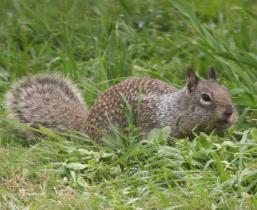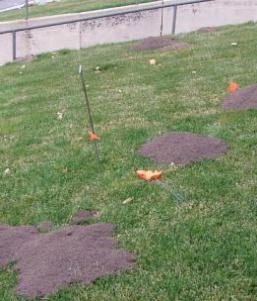Ground Squirrel
Ground Squirrel
Their body measures 9 to 11 inches, while their semibushy tail adds another 5 to 9 inches in length. Their fur is brownish gray and speckled with off white along the back; the sides of the head and shoulders are light gray to whitish. One subspecies that inhabits most of Northern California has a dark, triangular-shaped patch on its back between the shoulders; this patch is missing from other species. Many live in colonies with complex social structure.
EASTROCK LANDSCAPE
"Life Is Short, Enjoy The View"


Ground squirrels damage many food-bearing and ornamental plants. Particularly vulnerable are grains as well as nut and fruit trees such as almond, apple, apricot, orange, peach, pistachio, prune, and walnut. Ground squirrels will enter gardens and devour vegetables in the seedling stage. They can damage young shrubs, vines, and trees by gnawing bark, girdling trunks (the process of completely removing a strip of bark from a tree’s outer circumference), eating twigs and leaves, and burrowing around roots.
Ground squirrels will gnaw on plastic sprinkler heads and irrigation lines.
Prevention and Control
Traps are practical for control when squirrel numbers are low to moderate. Live-catch traps aren’t recommended, because they present the problem of how to dispose of the animals. Because ground squirrels carry diseases and are agricultural pests, the California Fish and Game Code specifies it is illegal to release them elsewhere without a written permit.
- wire mesh baskets for plants
- wire mesh installed under lawns
- wire mesh fence installed vertically 2' under ground around the perimeter of the yard
- trapping
- 6" cushion of 1"gravel around pvc and wire runs.
- Fumigation
- Bait